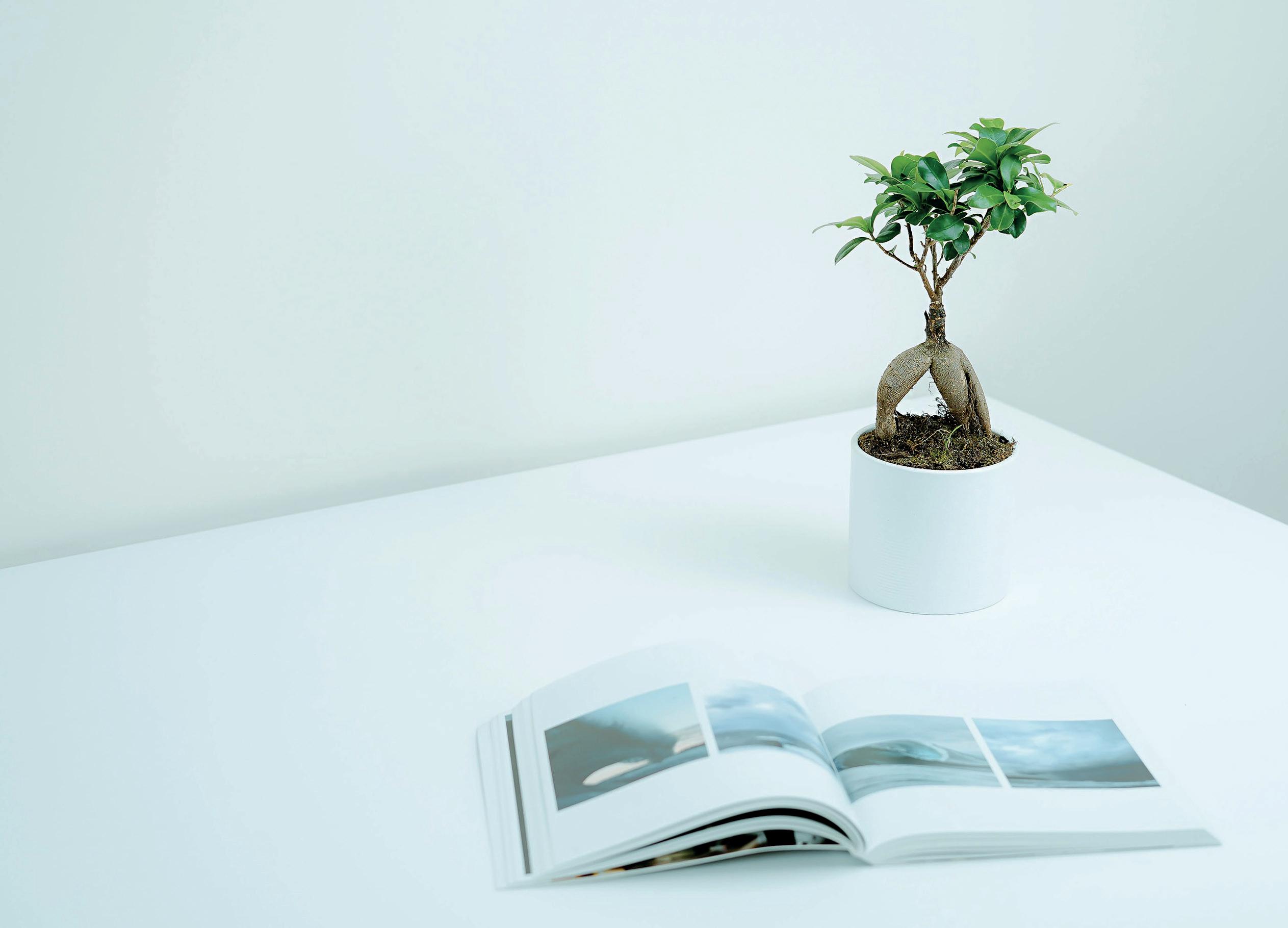
10 minute read
Creativity, Bonsai Apartment
PAGE 16
A LOOK AT MÉXICO TROUGH THE WORLD It is important to highlight that for the Ancient Mayan world view, the caves and the water sources were considered symbolic passages between the earthly world and the underworld, the wellspring of their relationship to the world of the dead Xibabá, and simultaneously to fertility. Generally speaking, the Mayan underworld is related to various mythological beings and fantastical beasts, like the moan bird, a manifestation of the god of death. Other nocturnal animals like jaguars, bats, and owls share the same symbolism. Yet without a doubt, the Popol Vuh, the most important document that has preserved the beliefs of the Ancient Maya, has provided knowledge about the fantastical mythology of the underworld and its association with the caves as access points to the world of the dead. It is therefore not surprising that some of the caverns were used as ceremonial sites. This is proven by the multiple altars—small metates and malacates, urns with the icon of Tlaloc the god of rain—carefully placed in certain parts of the cave of Balamkanché or the cave of Balamkú, both near to the ancient city of Chichén Itzá, Yucatan.
Advertisement
Likewise unsurprising is the sacred aura cloaking some of the cenotes where certain rituals were performed. One of the best known rituals was called chen ku, where victims were thrown into the waters, as was carried out at the sacred cenote of Chichén Itzá. Though the findings made there have generated the idea that the cenotes possess great riches in their depths, this
particular cenote is an extraordinary case because no evidence of any other type of offering has been found there. No jade, copper, gold, incense or textiles have been located there, while at other cenote mortuary sites research has shown their presence. The most extraordinary mortuary deposit was found at the Cenote Las Calaveras, Quintana Roo, along with the remains of at least one hundred and twenty individuals. Because the majority of the bones found there belonged to adults, the remains are not considered to be sacrificial. On the other hand, the notable absence of offerings at Chichén Itzá confirms the hypothesis that it was an ossuary. The GAM program has also shown us that the depths of preserved not only human bones but also a large quantity of the ossuary remains of extinct animals.

Now, beyond the surprising scientific, archeological and artistic findings associated with the GAM discoveries, the greatest lesson learned is the ability to present a clear alternative to the arrogant anthropocentric thought inherited from modern Western culture. It is clear that a world steeped in singularities is unconceivable and even a little inhospitable. Nevertheless, human beings do not necessarily have to be the only beings that place value on the components of their life environment. Why couldn’t every characteristic of nature participate in giving meaning to the world? This is the great lesson of an ontology based on the analogies GAM is offering us.
Bonsai Apartment.
What to read while sheltered-in-place

Berenice Ramos Romero Ph.D.
Literature, Catholic Pontific University of Chile. Editor in Chief of the magazine Arts Workshop and researcher on links between Japanese and Latin American Literature, CONICYT /ANID fellowship.
One of the most frequently cited quotes in the literary field is the following: “Let others brag about what they’ve written. I’m proud of what I’ve read.” With this maxim-- accredited to the Argentinean writer Jorge Luis Borges--in mind, I would like to suggest some texts to accompany this period of sheltering-in-place to which the entire world is subject.
During the times of this pandemic, it is difficult to express emotions and pain, I dare to say that we have all felt loneliness, anxiety, a degree of claustrophobia, boredom, stress and even some physical pain that makes us wonder: it could be a common cold, exhaustion, a passing headache--but it is terrifying to see that these malaise are the first symptoms shared by those infected with the novel corona virus SARS-CoV-2! On a general daily basis, we do not have the words to talk about these experiences, the vocabulary to describe these sensations, and the boldest among us perhaps can point to where the discomfort lies: They point to their head, their chest, they indicate skin irritations, the tic that has developed in their left eye since March. In and of itself, the physical suffering and the existential pain are incommunicable for some people, but luckily in literature, and in the arts in general, there are voices that have thoroughly nourished these types of experiences and can help us look at what is happening around us through a new lens.
In my point of view, there are two types writers: those who we read as if they were a friend--their prose becomes familiar, we love and are interested in them, we live their stories as if they were our own and carry them with us; and those who we read with admiration, in a profound states of reflection, whose books awaken a new, critical perspective on life for us. On this occasion, the selection I have gathered to suggest to you fall into the first category because, as Amos Oz says: “reading a novel is like being invited into other people’s rooms, the children’s playroom, the office, and even the bedroom. You will be invited into secret shame, family joy and even dreams.”
PAGE 17
JOURNAL OF CULTURE AND EDUCATION
PAGE 18
A LOOK AT MÉXICO TROUGH THE WORLD The House of the Sleeping Beauties
Yasunari Kawabata
The House of the Sleeping Beauties is a novel by Yasunari Kawabata. It narrates the daily visits an elderly man named Eguchi makes to a brothel. This place offers the bodies of young, virgin women, but only to be admired, not touched. So Eguchi, a seventy-six year old man, spends many nights beside these sleeping bodies, observing their nudity while remembering his life: he takes a tour of his past with other women (his wife, his mother, his daughters). The dynamic the protagonist experiences allows him to bring other deeper issues of interest to light, like loneliness, maturity, old age, and death. Quote: “There seemed to be a certain sadness in the body of the girl that inspired the nostalgia for death in the old man. But among the elderly men who visited the house, Eguchi was, perhaps, the one most easily moved; perhaps the majority only wanted to drink in the youth of the sleeping girls, enjoy them without awakening them.”
Alejandro Zambra
The Private Life of Trees is Chilean novelist Alejandro Zambra’s second novel. This short novel is about the life of a small family: Julien, Veronica and Veronica’s daughter, Daniela. Veronica is a painter, Julien is a professor and writer, but as it turns out, Veronica never comes back from her drawing class. The narrative occurs during this wait. While the wait grows longer, the character reflects on the exercise of writing, on literature, on the austerity of language and, primarily, on the fragility of life and emotions. The Weightless Ones
Valeria Luiselli
The Weightless Ones, a novel by Valeria Luiselli, addresses the impossibility of a romantic encounter and the irrevocability of loss. It is a story about ghostly existences narrated in two voices: one narrator is an editor in New York who is haunted by the ghost of Gilbert Owen on the subway; the other is Owen´s own voice talking about his literary life in New York while on the verge of death. This story of crossed lives keeps us constantly nostalgic as we observe to characters searching for one another among the underground trains, but with
La vida privada de los árboles
a minimal likelihood of finding one another.
Quote: Be careful! If you play at being a ghost, you might become one.”
Quote: “In fiction, when someone doesn´t arrive, thinks Julien, it is because something bad has happened. But fortunately this isn’t a novel.”
All the books suggested here are available as eBooks or in print.
A Year of Magical Thinking Joan Didion
The Year of Magical Thinking is the personal experience of journalist and writer Joan Didion, in which she narrates the sudden death of her husband, writer John Gregory Dunne. The details the author presents throughout the work bring us closer to constant reflection on grief, mourning and loss, and about how to endure life while in pain.
Quote: “Life changes quickly. Life changes in an instant. You sit down to dinner and the life you once knew is over.” Viral Voyages
Lina Meruane
Viral Voyages by author Lina Meruane, is a collection of essays focused on exhaustive research about AIDS (which she treats in the work as an epidemic) and how this issue was looked at and dealt with in different literary works.
Quote: “If the virus is a global artefact, it is also a key mechanism for representing globalization. [...] Its evil, in addition to being a virus that is precariously kept under control: the anguish of being separated from others, of being converted into disposable subjects like any consumer good.”
Beauty Parlor
Mario Bellatin
Beauty Parlor is a story created by Mario Bellatin, where he narrates the strange illness that is killing the inhabitants of a city. The sick people are rejected by their peers and have nowhere to spend their final days. And so a hair stylist decides to convert his salon into a place to die. In this place, the protagonist and his exotic fish escort us through the decline of the ill, loneliness, the struggle to remain in an enclosed space and resignation towards death.
Quote: “Everything was behind closed doors. I wouldn’t open for anyone. So someone will find me: dead, but surrounded by the splendor of the past.”
PAGE 19
JOURNAL OF CULTURE AND EDUCATION

ANUNCIO COMIDA
ACKNOWLEDGEMENTS
We would like to thank the following professionals for their contributions to the magazine:
PAGE 20
A LOOK AT MÉXICO TROUGH THE WORLD
David Sánchez Sánchez,
M.A. Historic Studies, Universidad Popular Autónoma del Estado de Puebla Humanities Department Chair, Universidad Popular Autónoma del Estado Puebla
Siglinde Langholz Villarreal
PhD Interdisciplinary Studies at the University of Maine. Full-time Professor of Visual Arts, Universidad de las Americas, Puebla
Verónica Lara Gallegos
M.A. Mental Health with a concentration in Childhood and Adolescence, Universidad of Leon, Spain. Art Therapy professor at the Museum of Contemporary Art, MARCO, Monterrey, Nuevo Leon
Hana Abdel Latif
B.A. Arts, Lebanese American University Project Curator and writer at ArchDaily, Lebanon
Andrea Estupiñán Villanueva
PhD. Universidad Popular Autónoma del Estado de Puebla in Management and Marketing. Full-time Research Professor at the Faculty of Communication Sciences, Benemérita Universidad Autónoma de Puebla (BUAP)
Martha Silvia Torres Hidalgo
PhD. Universidad Popular Autónoma del Estado de Puebla in Strategic Planning and Technology Management Full-time Research Professor at the Faculty of Communication Sciences, Benemérita Universidad Autónoma de Puebla (BUAP)
José Valderrama Izquierdo
M.A. Visual Arts, Universidad Nacional Autónoma de México Professor at the Universidad Iberomericana, Puebla
Laurence Le Bouhellec Guyomar,
M.A. Visual Arts, The University of Paris VIII Full-time Professor in the Anthropology Department, Universidad de las Americas Puebla
Berenice Ramos Romero
Ph.D. Literature, Pontificia Universidad Católica de Chile. Editor in Chief of the magazine Arts Workshop and researcher on links between Japanese and Latin American Literature, CONICYT /ANID fellowship
Cover Artist: Enrique Cojedor García
Illustrator. Escuela Superior de Dibujo Profesional in Madrid, Spain. Muralist, advertising illustrator, short story maker children like “Las Aventuras de Amaru”




Magazine Contest: Click on this icon and review our contest to participate in the next issue of our magazine.





